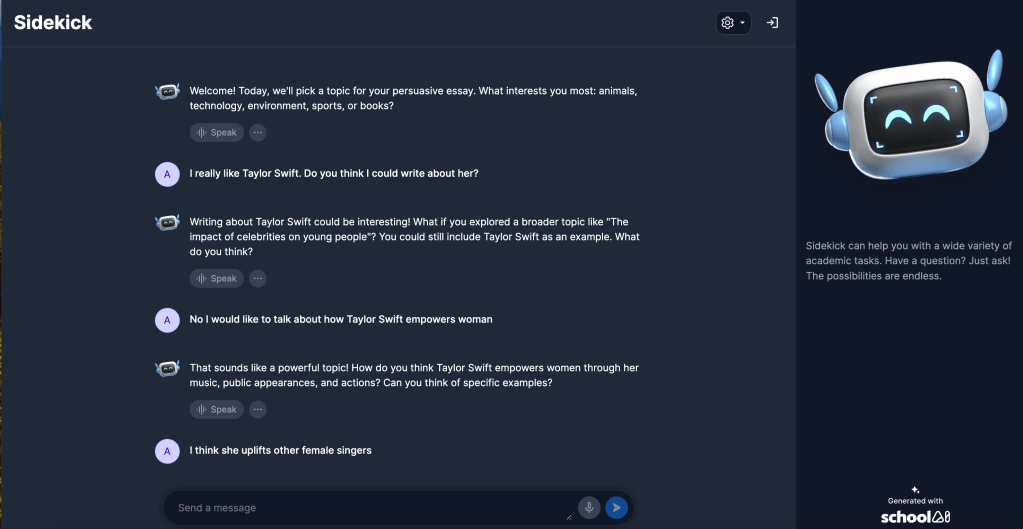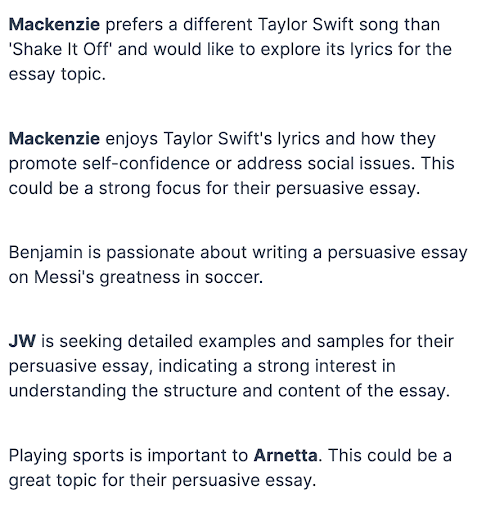When ChatGPT made its debut to the public in late 2022, it stirred a significant division within the education sector. Some educators embraced its potential to personalize and democratize learning, while others voiced concerns about its potential role as a cheating facilitator, potentially eroding authentic and creative thinking.
Over the past year, I’ve endeavored to adopt a more nuanced perspective on artificial intelligence (AI) in education, exploring ways AI could enhance personalized learning and change the narrative of AI solely as a tool for cheating. This shift became more apparent when I encountered tailored chatbots designed for classroom use, catering to students’ specific needs. I soon realized that these chatbots could offer invaluable assistance to students facing academic challenges or roadblocks, preventing resorting to dishonest behaviors.
So, how do we strike a balance? It begins with reevaluating AI’s role—not just as a menace to critical thinking and objectivity, but as a valuable tool that can aid students in producing more substantive and meaningful work.
Support System
Externally, interacting with a customized chatbot resembles engaging with tools like ChatGPT or other chat-based AI platforms, with notable distinctions. Educators using solutions like SchoolAI and Mizou can establish clear boundaries within these chatbots to provide safe and directed assistance to each student. These tools grant students access to personalized AI companions without compromising their data security. What sets them apart is the teacher’s ability to monitor students’ interactions in detail.
Teachers can finely regulate students’ actions during bot interactions, simplifying the task of keeping students on track with specific assignments. It’s crucial to emphasize that chatbots don’t supplant teachers; instead, they supplement student learning by offering timely support to initiate or advance tasks efficiently. At any given moment, some students may be using AI while others work autonomously on their tasks.
Goodbye, Blank Page
To illustrate this concept, let’s step into a bustling middle school language arts classroom where a diverse group of students is tasked with crafting a persuasive essay. While the instructor aims to empower students with “voice and choice” in selecting topics and commencing tasks, each student requires distinct support to kick-start their writing journey. Ahead of today’s lesson, we set up a chatbot named Sidekick to aid students in personalizing their learning experiences.
During the bot’s creation, the teacher expressed her challenge of insufficient time to attend to each student adequately. Typically, some students would be idly staring at blank pages during independent writing sessions, awaiting direct guidance. To tackle this issue, we utilized SchoolAI to design a bespoke bot, Sidekick, guiding students in topic selection, research initiation, and exploring different angles for their persuasive essays.

Furthermore, I highlighted the teacher’s capability to leverage insights from the teacher dashboard to comprehend each student’s progress, including their interactions with the chatbot. This enables a more customized coaching approach to address individual student needs.
The classroom ambiance shifts as students enthusiastically engage with the chatbot, expressing delight and gratitude for the valuable assistance it provides. Their comments range from “This is amazing!” to “I wish I had this sooner” and “It’s making such a difference for me!”. A student even approaches me to express gratitude for the support they always needed but hesitated to seek out.
Initially skeptical, the teacher now navigates the classroom, actively aiding students in their tasks, showcasing her newfound belief in leveraging AI tools within the educational framework. Witnessing students effectively collaborate with the chatbot, exploring their interests, researching, and developing their persuasive arguments validates the efficacy of such AI integration.

The teacher dashboard begins to offer insights into student interactions and their individual progress.
Throughout this process, the chatbot refrains from writing the essays for students, as it was specifically designed with safeguards to prevent such occurrences. The engagement is crafted to offer personalized support ensuring students stay on track, eliminating procrastination. Consider this engagement as the chatbot providing students with the guidance needed to overcome obstacles. Particularly, students with dyslexia and English language learners found this tailored support immensely beneficial.
In a different setting, kindergarteners leverage a customized chatbot to formulate sentences with sight words, selecting their preferred sentences to share with peers after exploring various examples. Ultimately, they transcribe the chosen sentence, enriched with new vocabulary, into their notebooks.
These classrooms exemplify how students can harness chatbots for more profound purposes beyond mere cheating or essay ghostwriting. They grasp the essence of engaging with AI for diverse information, seeking support, and navigating uncertainties. This structured approach prevents students from navigating the realm of AI independently without necessary guidance—a
The post Guide to Promoting Creative AI Usage among Students while Reducing Cheating Temptation appeared first on User's blog.